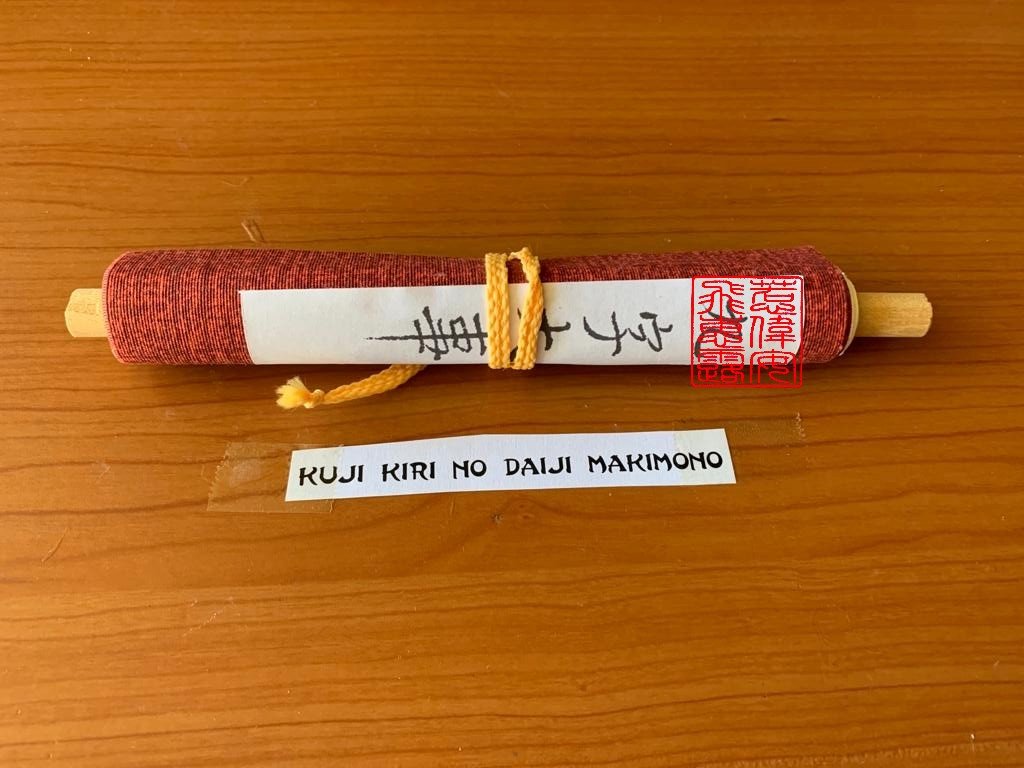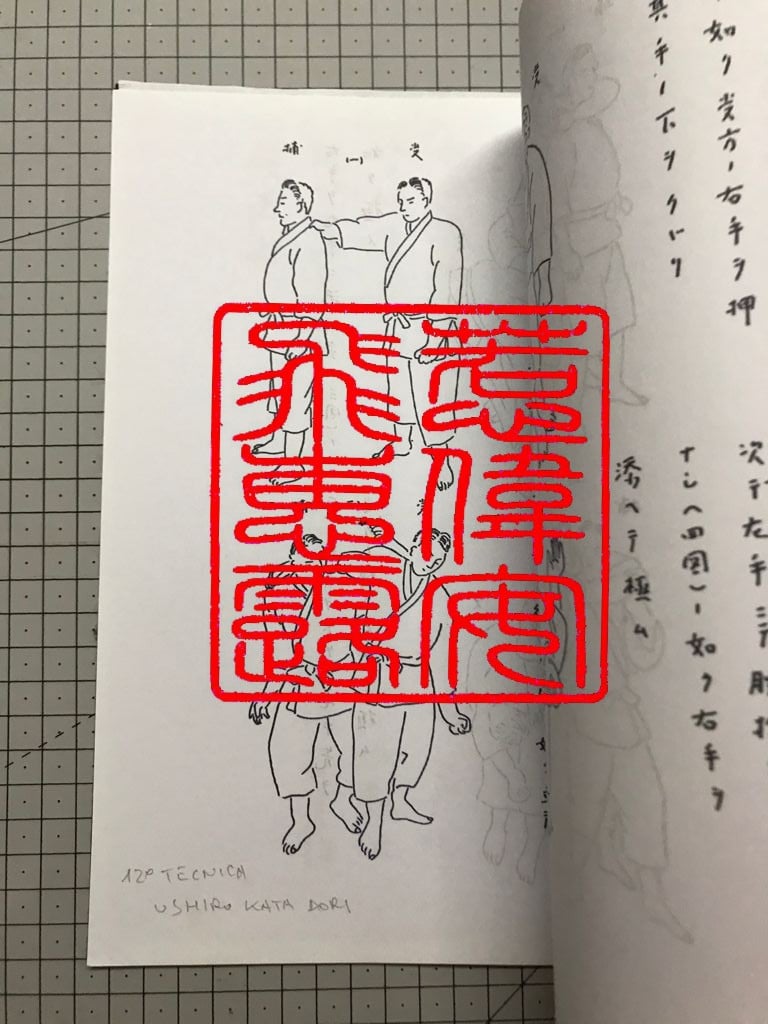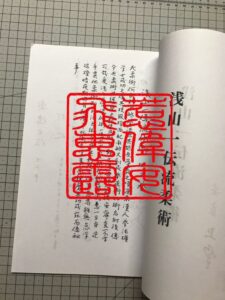DENSHO & MAKIMONO

DENSHO & MAKIMONO
La mia passione per le Arti Marziali ed i tantissimi viaggi all’estero soprattutto in Inghilterra e Spagna, mi hanno portato ad acquisire una delle tecniche più rinomate ed importanti della cultura Giapponese, la costruzione dei Densho e dei Makimono, dopo tanti anni di tirocinio, tre Master con la prestigiosa Università Giapponese “KEIO” e tanti sacrifici, finalmente ho acquisito questa tecnica originale, per me che ho questa passione per le Arti Marziali e per la cultura giapponese in generale non può che essere un ennesimo riconoscimento da parte di tante persone che hanno ricevuto i miei Densho e moltissime persone in tutto il mondo che mi chiedono notizie in merito. Continuo ancora oggi dopo tanti anni ad esercitarmi in questa tecnica non facile. Questo mi ha permesso di avere ancor di più una visione culturale e tecnica a 360 gradi di come si costruiscono i Densho e i Makimono e l’utilizzo della carta giapponese Washi.
Ma che cos’è un Densho o Shoden? 伝書 È un testo di trasmissione simile ad un libro e descrive tecniche, kata o segreti dello stile a cui appartiene. Il testo rappresenta spesso un “catalogo” delle tecniche dello stile, nel qual caso viene chiamato “mokuroku” che viene spesso associato al termine Densho o Soden che significa che contiene le basi tecniche dello stile e rappresenta la conoscenza necessaria per acquisire il grado corrispondente al livello del Makimono. Un Makimono (巻 物) invece è un rotolo di carta o di seta tradizionalmente utilizzato in Giappone. Caratteristicamente viene letto in orizzontale, al contrario del kakemono che viene osservato verticalmente. Scritto con vernice o inchiostro con una bella calligrafia o disegni. Anche nel Makimono può esserci la trasmissione della scuola con cataloghi delle tecniche, i suoi kata e i suoi segreti.
gianpiero.costabile@hotmail.com
Infoline: 392-2499756
Web: http://www.artimarzialicosenza.it
DENSHO & MAKIMONO
My passion for Martial Arts and the many trips abroad especially in England and Spain, led me to acquire one of the most renowned and important techniques of Japanese culture, the construction of the Densho and Makimono, after many years of training, three Masters with the prestigious Japanese University “KEIO” and many sacrifices, I finally acquired this original technique, for me who has this passion for Martial Arts and for Japanese culture in general it can only be yet another recognition by many people who have received my Densho and many people around the world who ask me about it. I still continue today after many years to practice this difficult technique. This allowed me to have even more a 360-degree cultural and technical vision of how Densho and Makimono are built and the use of Japanese Washi paper.
But what is a Densho or Shoden?伝 書 It is a transmission text similar to a book and describes techniques, kata or secrets of the style to which it belongs. The text often represents a “catalog” of the techniques of the style, in which case it is called “mokuroku” which is often associated with the term Densho or Soden which means that it contains the technical bases of the style and represents the knowledge necessary to acquire the degree corresponding to the level of the Makimono. A Makimono (巻 物) on the other hand is a roll of paper or silk traditionally used in Japan. Characteristically it is read horizontally, unlike the kakemono which is observed vertically. Written in paint or ink with beautiful calligraphy or drawings. Also in the Makimono there can be the transmission of the school with catalogs of the techniques, its kata and its secrets.
All the Densho that you will find on this page I have built them by hand with the Japanese technique “Yotsume Toji (Japanese four-hole binding). While as regards the Makimono (the scrolls), I built them with the “Kansubon” technique. The Densho and Makimono relate to most of the martial arts.
For pure curiosity I can tell you that to build a Densho or a Makimono there are at least ten different steps.
1) Have the project.
2) Restoration (three phases).
3) Restoration software (I use Corel Draw).
4) Precision printer (vertical).
5) Japanese Washi paper.
6) Parchment paper.
7) Print in BJ5. (Densho).
8) Cover construction.
9) Hand binding.
10) Labels.
For more information write to:
gianpiero.costabile@hotmail.com
Infoline: 392-2499756
Web: http://www.artimarzialicosenza.it
BUDO RENSHU
Seigo Ryu Nawa Maki Yugenshu
Tenshin Ryu Nihon Den Mokuroku
Asayama Ichiden Ryu Idori No Kurai
Asayama Ichiden Ryu Chuden No Kurai
Asayama Ichiden Ryu Gedan No Kurai
Asayama Ichiden Ryu Jodan No Kurai
Asayama Ichiden Ryu Okuden No Kurai
BANSENSHUKAI SASAYAMA EDIZIONE
Seiko Fujita 藤田 西湖
Seiko Fujita
Seiko Fujita (藤田 西湖, Fujita Seiko, 10 febbraio 1898 – 4 gennaio 1966), nato Isamu Fujita (藤田 勇, Fujita Isamu), è stato un importante artista marziale, ricercatore e autore giapponese. Considerato il quattordicesimo e ultimo erede della tradizione Kōka-ryū Wada-ha Ninjutsu, era molto rispettato dai suoi colleghi e un membro fondamentale della comunità di arti marziali classiche del Giappone. Samu Fujita nacque a Tokyo e studiò Kōka-ryū Wada-ha (Ninjutsu) sotto la tutela di suo nonno, Fujita Shintazaemon, 13° Soke del ramo Wada di Kōka-ryū Ninjutsu. Ha studiato alle università Waseda e Meiji e inizialmente ha iniziato la sua carriera in una società di giornali. Ha continuato a studiare diverse altre arti marziali ed è stato anche notato come autore, ricercatore e collezionista di antiche pergamene. Secondo alcuni riferimenti, “le opinioni sono divise se fosse un vero ninja o un semplice ricercatore di budō”. Durante la seconda guerra mondiale, Fujita insegnò Koka Ryu Ninjutsu nell’Accademia dell’Esercito di Nakano (Rikugun Nakano Gakkō). Fujita in seguito ha lavorato come specialista della sicurezza del governo. Negli anni successivi fu influente nell’insegnamento di molte arti tradizionali giapponesi. Tra gli studenti degni di nota figurano Motokatsu Inoue, Mabuni Kenwa, Saito Satoshi, Fujitani Masatoshi, l’attore Tomisaburo Wakayama e Manzo Iwata, che divenne l’erede di alcuni dei suoi stili. Fujita non ha lasciato alcun erede ufficiale per il Kōka-ryū Wada Ha. Seiko Fujita ha pubblicato Zukai Torinawajutsu che mostra centinaia di legami Hojōjutsu di molte scuole diverse e molti altri testi sul ninjutsu e le arti marziali. Morì di cirrosi epatica all’età di circa 68 anni e probabilmente soffriva di angioedema ereditario (che può precludere la pratica delle arti marziali, sebbene Fujita possa aver dimostrato la capacità di superare alcuni sintomi della malattia). La sua vasta collezione di libri, pergamene e documenti storici, il Fujita Seiko Bunko, è conservata presso la Biblioteca Odawara nella prefettura di Kanagawa. La sua collezione di armi, strumenti e abbigliamento storici è stata lasciata in eredità al Museo Ninja Iga Ryu nella Prefettura di Mie.
Seiko Fujita
Seiko Fujita (藤田 西湖, Fujita Seiko, 10 February 1898 – 4 January 1966), born Isamu Fujita (藤田 勇, Fujita Isamu), was a prominent Japanese martial artist, researcher and author. Regarded as the 14th and final heir to the Kōga-ryū Wada-ha Ninjutsu tradition, he was highly respected by his peers and a core member of Japan’s classical martial arts community. samu Fujita was born in Tokyo, and studied Kōga-ryū Wada-ha (Ninjutsu) under the tutelage of his grandfather, Fujita Shintazaemon, 13th Soke of the Wada branch of Kōga-ryū Ninjutsu. He was educated at both Waseda and Meiji universities, and initially began his career at a newspaper company. He went on to study several other martial arts and was also noted as an author, researcher and collector of ancient scrolls. According to some references, “opinions are divided if he was a real ninja or a mere budō researcher.” During World War II, Fujita taught Koga Ryu Ninjutsu in the Army Academy of Nakano (Rikugun Nakano Gakkō). Fujita later worked as a government security specialist. In later years he was influential in teaching many traditional Japanese arts. Notable students include Motokatsu Inoue, Mabuni Kenwa, Saito Satoshi, Fujitani Masatoshi, actor Tomisaburo Wakayama and Manzo Iwata, who became heir to some of his styles. Fujita left no official heir for Kōga-ryū Wada Ha.Seiko Fujita published Zukai Torinawajutsu showing hundreds of Hojōjutsu ties from many different schools, and several other texts on ninjutsu and martial arts. He died of cirrhosis of the liver at about the age of 68 and likely suffered from hereditary angioedema (which can preclude the practice of martial arts, although Fujita may have demonstrated the ability to overcome some disease symptoms). His vast collection of books, scrolls and historical documents, the Fujita Seiko Bunko, is housed at the Odawara Library in Kanagawa Prefecture. His collection of historical weapons, tools and attire were bequeathed to the Iga Ryu Ninja Museum in Mie Prefecture.
Le sue opere:
“Hōjutsu Yarikata Etoki”, “Guida illustrata dei trucchi del Budo” 1928
“Ninjutsu hiroku”, “Note segrete sul ninjutsu” 1936.
“Ninjutsu to wa”, “Cos’è il Ninjutsu” 1938.
«Ninjutsu kara Supai-sen e» «Dal ninjutsu alla guerra di spionaggio» 1942.
“Shintō Musō-ryū Jōjutsu Zukai”, “La tecnica illustrata della via del bastone corto da Shintō Musō-ryū» 1953.
“Doronron: Saigo no Ninja”, “L’ultimo ninja” Ottobre 1958.
“Kenpō Gokui Atemi Satsu-Kappō Meikai”, “La tecnica di colpire i punti vitali del Kenpō per uccidere o rianimare”. 1958.
“Zukai Shurikenjutsu”, “La tecnica illustrata dello shuriken”. Giugno 1964.
“Zukai Hojōjutsu” / “Zukai Torinawajutsu”, “La tecnica illustrata della corda legante”. Autunno 1964.
Nel 1972, gran parte di questo libro è stata tradotta in francese da Jacques Devêvre, e pubblicata dalle edizioni «Judo international», con il titolo: «Les points vitaux secrets du corps humain» («I punti vitali segreti del corpo umano»), poi ripubblicato nel 1998, da «Budo editions», con il titolo: «L’art ultime et sublime des points vitaux» («La magnifica e ultima arte dei punti vitali») (con commenti di Henry Plée)
His works:
“Hōjutsu Yarikata Etoki”, “Illustrated guidance of Budo tricks” 1928
“Ninjutsu hiroku”, “Secrets notes about ninjutsu” 1936
“Ninjutsu to wa?”, “What is Ninjutsu” 1938
«Ninjutsu kara Supai-sen e» «From ninjutsu to spy warfare» 1942
“Shintō Musō-ryū Jōjutsu Zukai”, “The illustrated technique of the way of the short staff from Shintō Musō-ryū» 1953
“Doronron: Saigo no Ninja”, “The last ninja” Ottobre 1958
“Kenpō Gokui Atemi Satsu-Kappō Meikai”, “The technique of strike the vital points from the Kenpō for kill or revive”. 1958
“Zukai Shurikenjutsu”, “The illustrated technique of the shuriken” giugno 1964
“Zukai Hojōjutsu” / “Zukai Torinawajutsu”, “The illustrated technique of the binding rope” Autunno 1964.
In 1972, a big part of this book has been translated in French by Jacques Devêvre, and published by the editions «Judo international», with the title: «Les points vitaux secrets du corps humain» («The secret vital points of the human body»), then re-published in 1998, by «Budo editions », with the title : « L’art ultime et sublime des points vitaux » (« The magnificent and ultimate art of the vital points ») (with commentaries by Henry Plée)

Seiko Fujita (藤田 西湖, Fujita Seiko, 10 Febbraio 1898 – 4 Gennaio 1966)
HOJUTSU YARIKATA ZUKAI







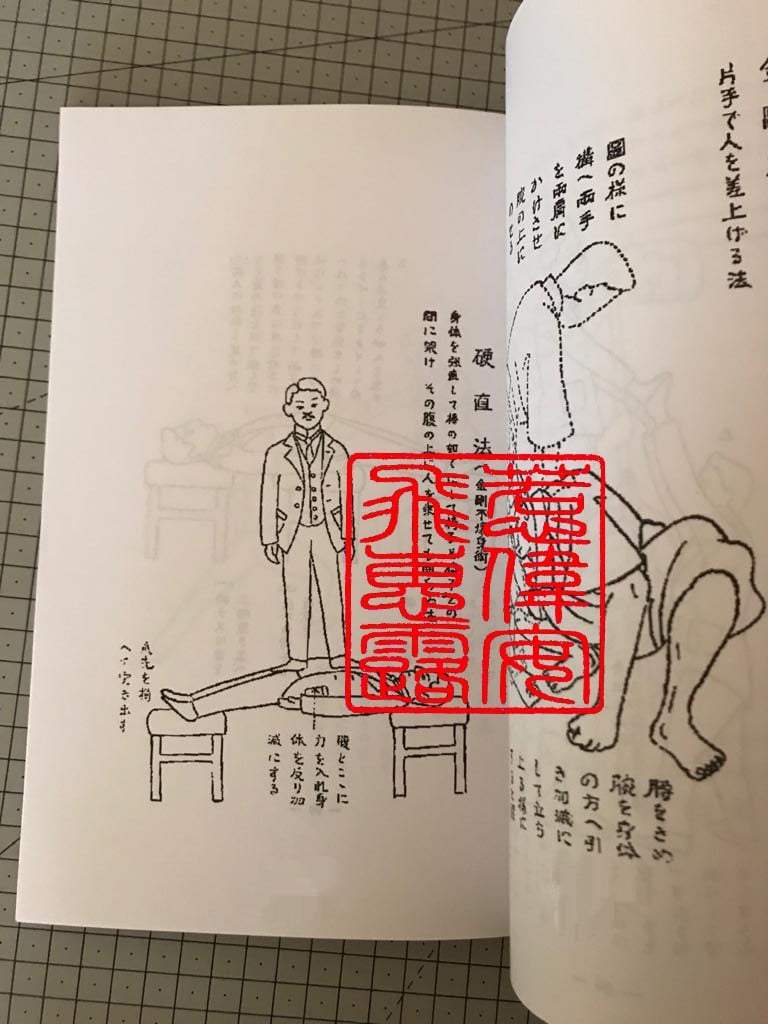

KENPO GOKUI ATEMI









SHURIKEN JUTSU ZUKAI









SHINTO MUSO RYU JOJUTSU ZUKAI

SHINTO MUSO RYU JOJUTSU ZUKAI




SEIGO RYU NAWA MAKI









SEIGO RYU NAWA SHO





KAKUSHI NO MAKI





SOKKETSU BUGEI JUHAPPAN
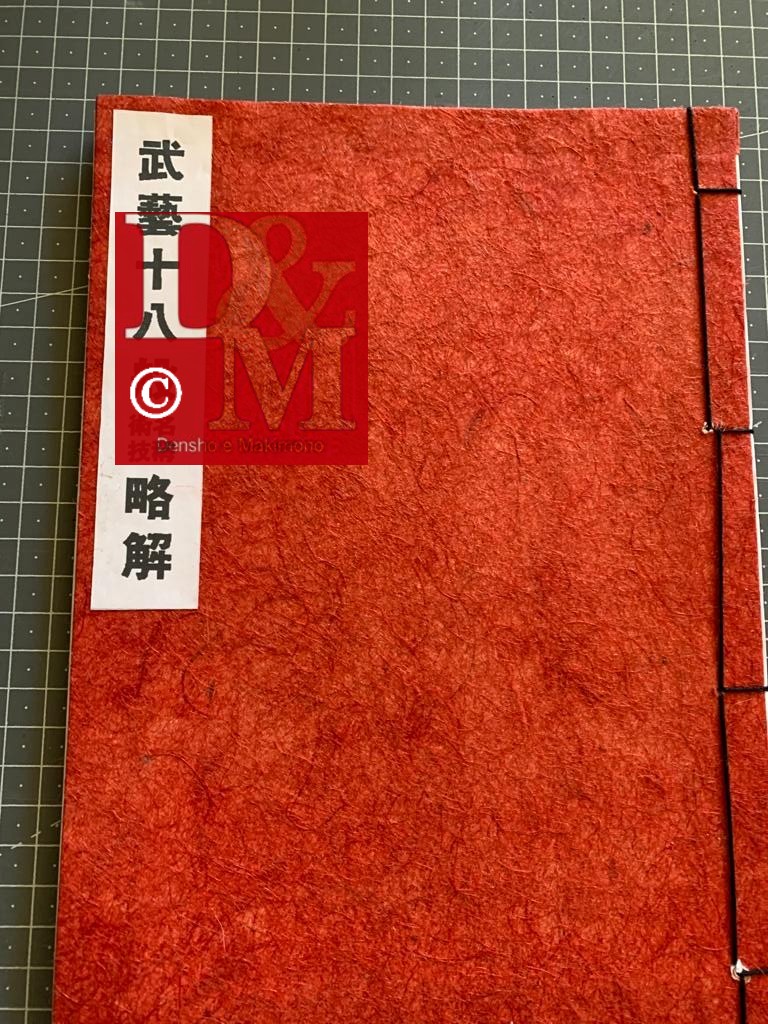






















MAKIMONO













